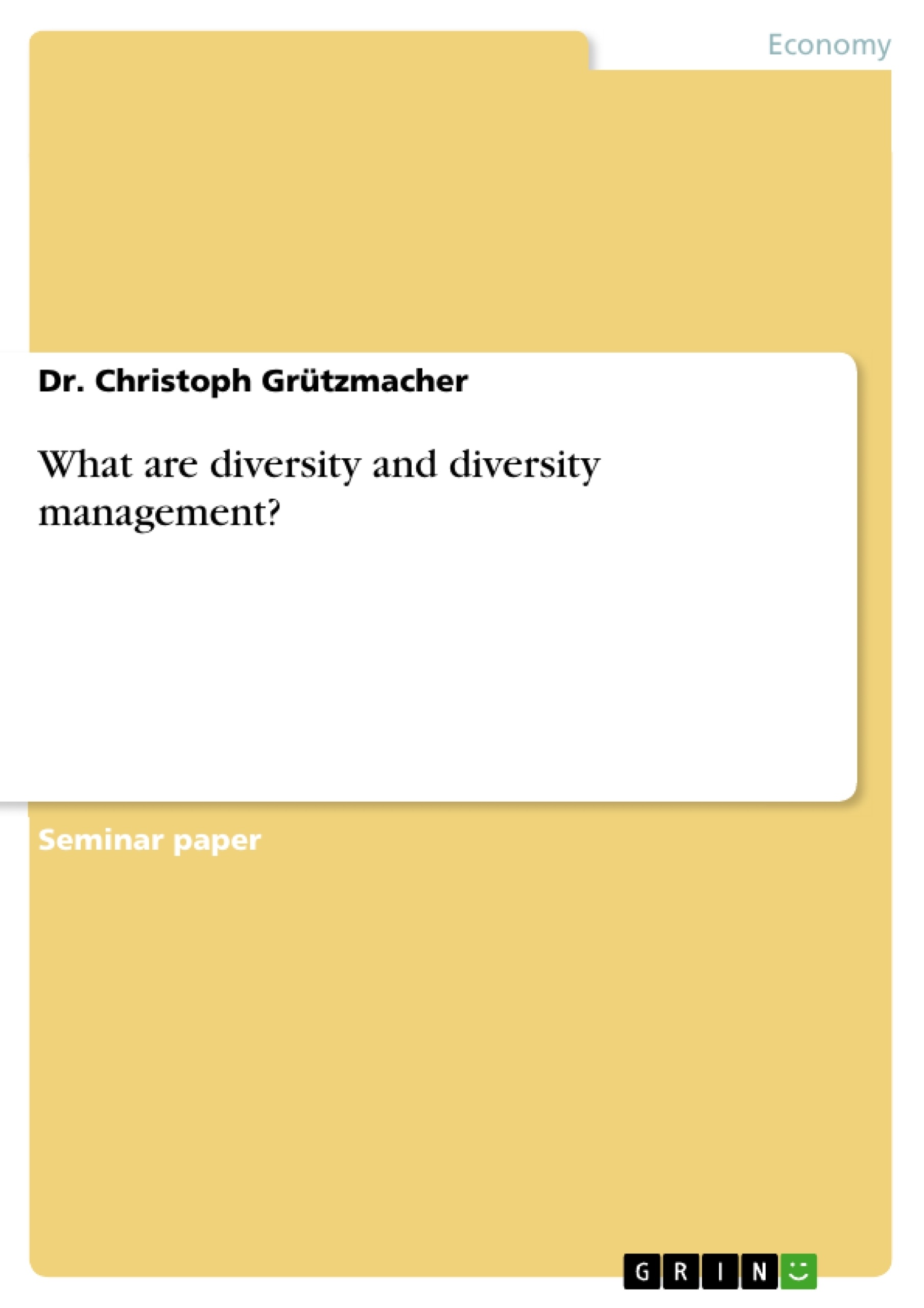This research paper looks to provide a clear overview of diversity and diversity management. After these terms have been defined, the focus will shift to some of the opportunities and obstacles associated with diversity, after which a conclusion shall be drawn to show why diversity management plays an important part in human resource management in a world that is becoming increasingly globalized.
Table of Contents
- Introduction
- What are diversity and diversity management?
- Definitions
- Types
- Reasons
- Opportunities and benefits
- Obstacles and challenges
- Cultural barriers
- Negative attitudes
- Mistakes in handling diversity
- Integration possibilities of diversity
- Training and recruitment
- Personnel management
- Managerial support
Objectives and Key Themes
This research paper provides a comprehensive overview of diversity and diversity management within organizations, focusing on its relevance in an increasingly globalized world. The paper examines the concepts and definitions of diversity, explores the opportunities and benefits it offers, and analyzes the obstacles and challenges that hinder its implementation. Ultimately, it aims to demonstrate the crucial role diversity management plays in achieving organizational success, particularly in light of the demographic changes occurring in Germany.
- Defining and understanding diversity and diversity management in the European context
- Analyzing the opportunities and benefits of diversity management for organizations
- Exploring the obstacles and challenges associated with implementing diversity programs
- Investigating the integration possibilities of diversity through training, recruitment, and managerial support
- Highlighting the relevance of diversity management in a globalized world and its impact on organizational success
Chapter Summaries
The paper begins by introducing the increasing relevance of personnel diversity in organizations, particularly in Germany, where a shortage of skilled labor necessitates greater inclusivity. It then delves into the definitions of diversity and diversity management, exploring different perspectives and identifying the key criteria commonly considered. The paper examines the origins of the concept in the United States and analyzes its application in the European context, highlighting the importance of considering cultural and institutional differences.
The subsequent chapters discuss the opportunities and benefits of diversity management, highlighting its potential to attract and retain skilled employees, improve corporate image and ethics, and enhance organizational flexibility. The paper also addresses the obstacles and challenges associated with diversity management, including cultural barriers, negative attitudes, and the potential for misinterpretations and misapplications. These challenges are further examined in relation to the integration possibilities of diversity through training, recruitment, and managerial support. The paper emphasizes the importance of establishing a diverse workforce, fostering an inclusive working environment, and creating equal opportunities for all employees.
Keywords
Diversity management, workforce diversity, cultural diversity, organizational culture, inclusion, recruitment, training, managerial support, globalization, demographic change, skilled labor, corporate image, ethical considerations, obstacles, challenges, integration possibilities, European context.
- Quote paper
- Dr. Christoph Grützmacher (Author), 2017, What are diversity and diversity management?, Munich, GRIN Verlag, https://www.grin.com/document/419701




